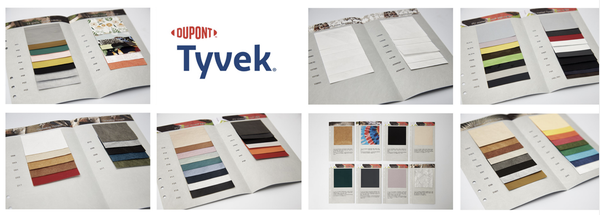Nearly two decades after inventing the first folded Tyvek® Wallet (Mighty Wallet) I'm just now starting to research the origins of Origami.
But the truth is when I came up with the idea of a folded origami wallet I didn't search for "Origami Wallet" and in those days the internet was a sparse resource for real research so instead I looked for wallet patterns and other related topics, like the Duct Tape Wallet craze that was going on at the time.
But the truth is when I came up with the idea of a folded origami wallet I didn't search for "Origami Wallet" and in those days the internet was a sparse resource for real research so instead I looked for wallet patterns and other related topics, like the Duct Tape Wallet craze that was going on at the time.

Now that I'm working on my newest origami wallet design I thought I could perhaps gain some insights from this ancient art and better inform my creative process in realizing this new super thin origami wallet design.
What is astonishing is that there were two figures who had the biggest contributions to origami, Akira Yoshizawa and Humiaki Huzita, both men were Japanese who lived at the same time and who died less than one month apart from each other in March 2005.
In the 1980s, Huzita came up with a special set of rules called "origami axioms." These rules established the math and geometry behind Origami. This took the art of Origami into the art of mathematics and revealed the complex geometry behind these delicate forms.
But it was Akira in the 1950s who did the most to popularize this ancient art. Akira pursued his passion while selling dried fish door to door in Japan wanting to have the flexibility to follow his passion origami. In 1952 he was commissioned to create the signs of the zodiac for a magazine.

The popularity of the designs launched him into instant fame and led to a show of his art at the Stedelijk Museum in Amsterdam. Akira went on to popularize his craft through a series of books that are credited with spreading the passion for origami globally.

Lots of people who love origami today owe a great debt to Huzita for popularizing Origami to the point where artists, designers, and even math experts, use Huzita's rules to make all sorts of amazing things out of paper.
Origami Relegated to a Craft Until 2005
But, there's one surprising thing: there were very few practical applications of Origami as the concept had not really expanded into product design yet. I expected that I would find all sort of product ideas like the Mighty Wallet but it never seemed to take that direction.
Origami was appreciated for its intricate designs without practical applications per se. I had to really dig to find even rudimentary concepts of folders or business card holders that could be used as a wallet but given the fragility of the origami paper I can see why none of the concepts of origami extended into actual physical products.
An Art Expanded by the Opportunities of Tyvek®
Not until the Mighty Wallet and the use of Tyvek was there an opportunity to extend the concepts of origami into wallets. Perhaps Tyvek had the greatest opportunity for Origami to escape it's boundaries as an art form and expand into the realm of product design.
The Mighty Wallet created an entire new genre of thin wallets by pioneering the entire idea of using the Tyvek® material as an alternative eco-friendly wallet material.
Join me on the adventure of bringing my next product to life as I share the last stages of the design process through my Mighty Network & Design Laboratory.


